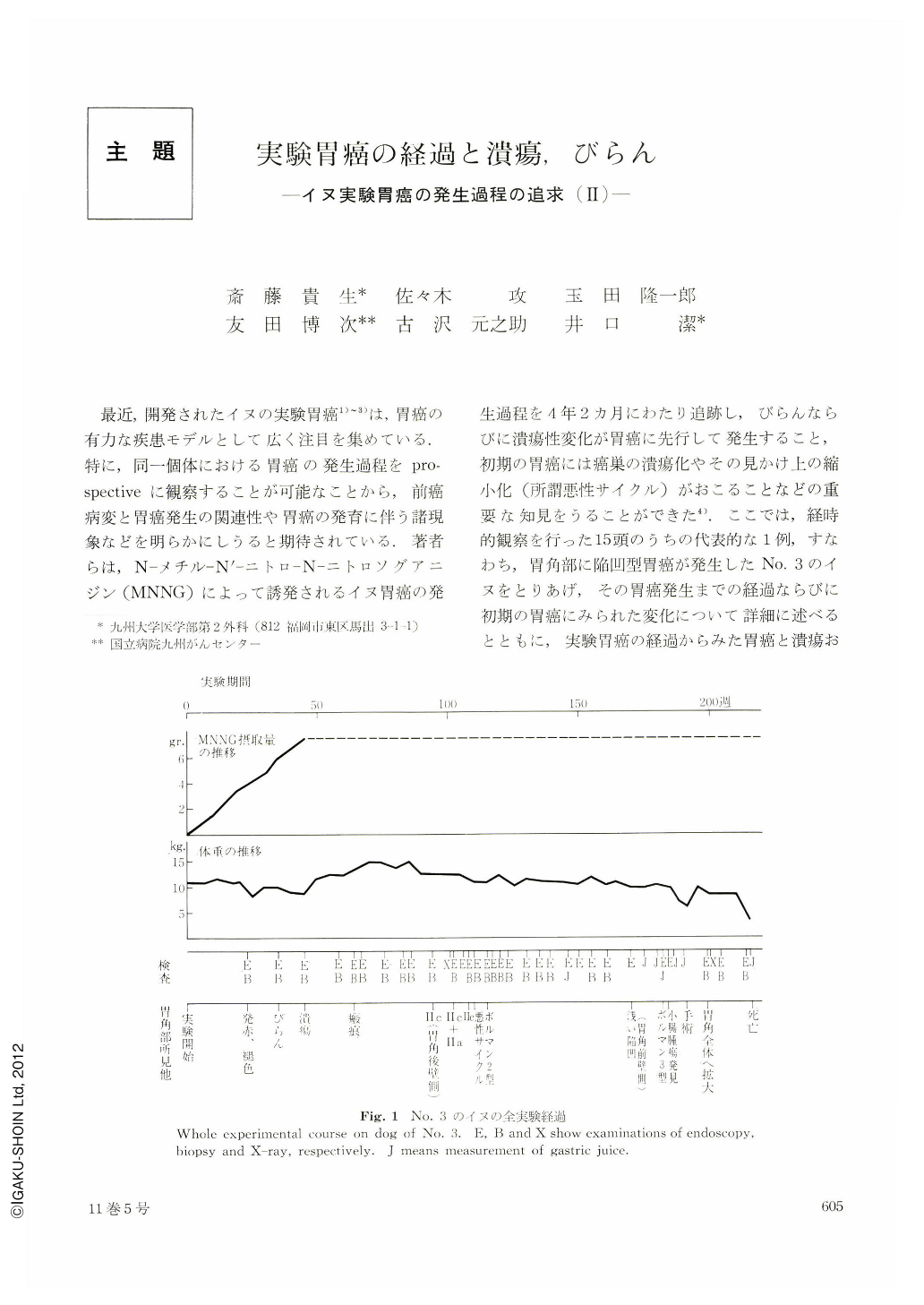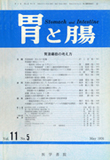Japanese
English
- 有料閲覧
- Abstract 文献概要
- 1ページ目 Look Inside
最近,開発されたイヌの実験胃癌1)~3)は,胃癌の有力な疾患モデルとして広く注目を集めている.特に,同一個体における胃癌の発生過程をprospectiveに観察することが可能なことから,前癌病変と胃癌発生の関連性や胃癌の発育に伴う諸現象などを明らかにしうると期待されている,著者らは,N-メチル-N'-ニトロ-N-ニトロソグアニジン(MNNG)によって誘発されるイヌ胃癌の発生過程を4年2カ月にわたり追跡し,びらんならびに潰瘍性変化が胃癌に先行して発生すること,初期の胃癌には癌巣の潰瘍化やその見かけ上の縮小化(所謂悪性サイクル)がおこることなどの重要な知見をうることができた4).ここでは,経時的観察を行った15頭のうちの代表的な1例,すなわち,胃角部に陥凹型胃癌が発生したNo.3のイヌをとりあげ,その胃癌発生までの経過ならびに初期の胃癌にみられた変化について詳細に述べるとともに,実験胃癌の経過からみた胃癌と潰瘍およびびらん性変化との関連について考えてみたい.なお,この胃癌のその後における発育進展状況ならびにその終末像を次報(Ⅲ)5)に示す関係上,本報の一部には全経過を含めた記載がなされている.
N-methyl-N'-nitro-N-nitrosoguanidine (MNNG) was administered to 15 dogs and stomach carcinogenesis was followed by endoscopy and biopsy for 216 weeks. Early changes leading to development of a stomach carcinoma and also early states of carcinoma of a dog, called No. 3, are described here in detail. There were slightly reddened mucosa surrounded with fading at the angle of the stomach 23 weeks after the beginning of administration of MNNG. Thereafter, numerous irregular-shaped reddened spots of pin-point to dime size were observed in the nearly entire mucosa and eroded changes appeared in the mucosa of the angle at 35 weeks. The erosion turned into an ulcer in the angle and the reddened spots were localized to the antral portion at 44 weeks. Biopsy revealed undifferentiated regenerating epithelia, atypical glands and intestinal metaplasia-like glands at the edge and base of the erosion and the ulcer. After the termination of administration of MNNG at the 45th week, the ulcer at the angle was rapidly repaired. Differentiated regenerating epithelia were detected at the healed ulcer. A new depressed lesion appeared in the healed mucosa of the posterior wall side of the angle at 76 weeks. It changed into a demarcated shallow depression like IIc which contained atypical glands by 94 weeks. The Ⅱc-like lesion became a slightly depressed one with irregular marginal elevation, Ⅱc+Ⅱa which proved histologically to be a tubular adenocarcinoma. The early carcinoma showed the phenomenon of so-called malignant cycle between 108 and 110 weeks.

Copyright © 1976, Igaku-Shoin Ltd. All rights reserved.


